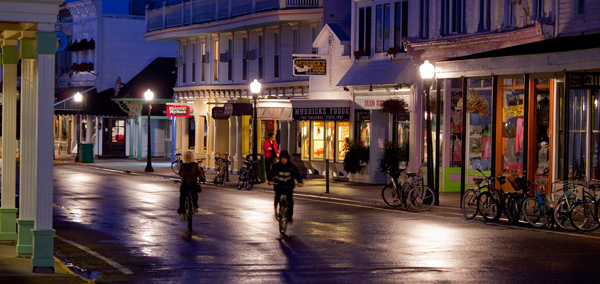By Doug Box
 Night shooting is one of my favorite available light situations. With the high ISO capabilities of the modern digital cameras, this is even more fun. If you do find noise in your night shots, you can use Nik Dfine 2.0 to remove it. It’s a great product. Another way to prevent noise is to shoot with your camera on a tripod. Using a tripod will allow you to use a slower shutter speed, which will allow you to use a lower ISO. Remember, the lower the ISO, the less likelihood you will have noise in your image.
Night shooting is one of my favorite available light situations. With the high ISO capabilities of the modern digital cameras, this is even more fun. If you do find noise in your night shots, you can use Nik Dfine 2.0 to remove it. It’s a great product. Another way to prevent noise is to shoot with your camera on a tripod. Using a tripod will allow you to use a slower shutter speed, which will allow you to use a lower ISO. Remember, the lower the ISO, the less likelihood you will have noise in your image.
 The image of BB King’s Blues Club was made at ISO 6400 at f4 and 1/400, using a Canon 5D Mark II. There is almost no noise. Because there is a lot of neon and reflection, the center-weighted metering mode worked great. In the shot of the carnival rides, the blue sky added dimension to the image, which was made at f4 at 1/60 and an ISO of 800.
The image of BB King’s Blues Club was made at ISO 6400 at f4 and 1/400, using a Canon 5D Mark II. There is almost no noise. Because there is a lot of neon and reflection, the center-weighted metering mode worked great. In the shot of the carnival rides, the blue sky added dimension to the image, which was made at f4 at 1/60 and an ISO of 800.
Metering for Night Shots – Metering is the most complicated part of night shooting. I usually start with the meter in center-weighted mode, especially if there is a lot of black sky. Then, I center the meter on the lightest area of the scene. You can use the matrix or evaluative mode if your scene has a lot of mid tones or does not have a large solid black area.
In this street scene of Mackinaw Island, I got up really early one morning because I knew they washed down the streets every morning and wet streets are great for night shooting. The image was shot at f4 at 1/8 and ISO 2500. Even though people were on bicycles, I was able to stop the action by waiting until the cyclist drove straight toward the camera.
 Then, while walking along the harbor, I noticed the lights on the pier. I loved the sky (to the eye, it was solid black). For that image, I chose to be the subject because no one was around to volunteer. I used an exposure of f4 at 3.2 seconds and ISO 2500. I took a couple of shots and then selected the best one. For the long exposure, I had to remain very still. I found that, if I let all of the air out of my lungs, I could hold still.
Then, while walking along the harbor, I noticed the lights on the pier. I loved the sky (to the eye, it was solid black). For that image, I chose to be the subject because no one was around to volunteer. I used an exposure of f4 at 3.2 seconds and ISO 2500. I took a couple of shots and then selected the best one. For the long exposure, I had to remain very still. I found that, if I let all of the air out of my lungs, I could hold still.
Today’s cameras make it easier than ever before to experiment with new techniques. So, don’t be afraid to do some “after-hours” photography to give your portfolio a new and creative look.
 Doug Box, M.Photog.Cr., is an instructor at this year’s Texas School of Professional Photography where he will team with Randy Kerr to teach a class on “Nature, Macro, Floral, Landscape, Street & Travel.” The class will take field trips to the Dallas Arboretum and other sites to provide students with plenty of hands-on photography experience.
Doug Box, M.Photog.Cr., is an instructor at this year’s Texas School of Professional Photography where he will team with Randy Kerr to teach a class on “Nature, Macro, Floral, Landscape, Street & Travel.” The class will take field trips to the Dallas Arboretum and other sites to provide students with plenty of hands-on photography experience.
Doug is also an accomplished author of several books including, “Available Light Photography,” published by Amherst Media.
For more information on his class, go to www.TexasSchool.org.











